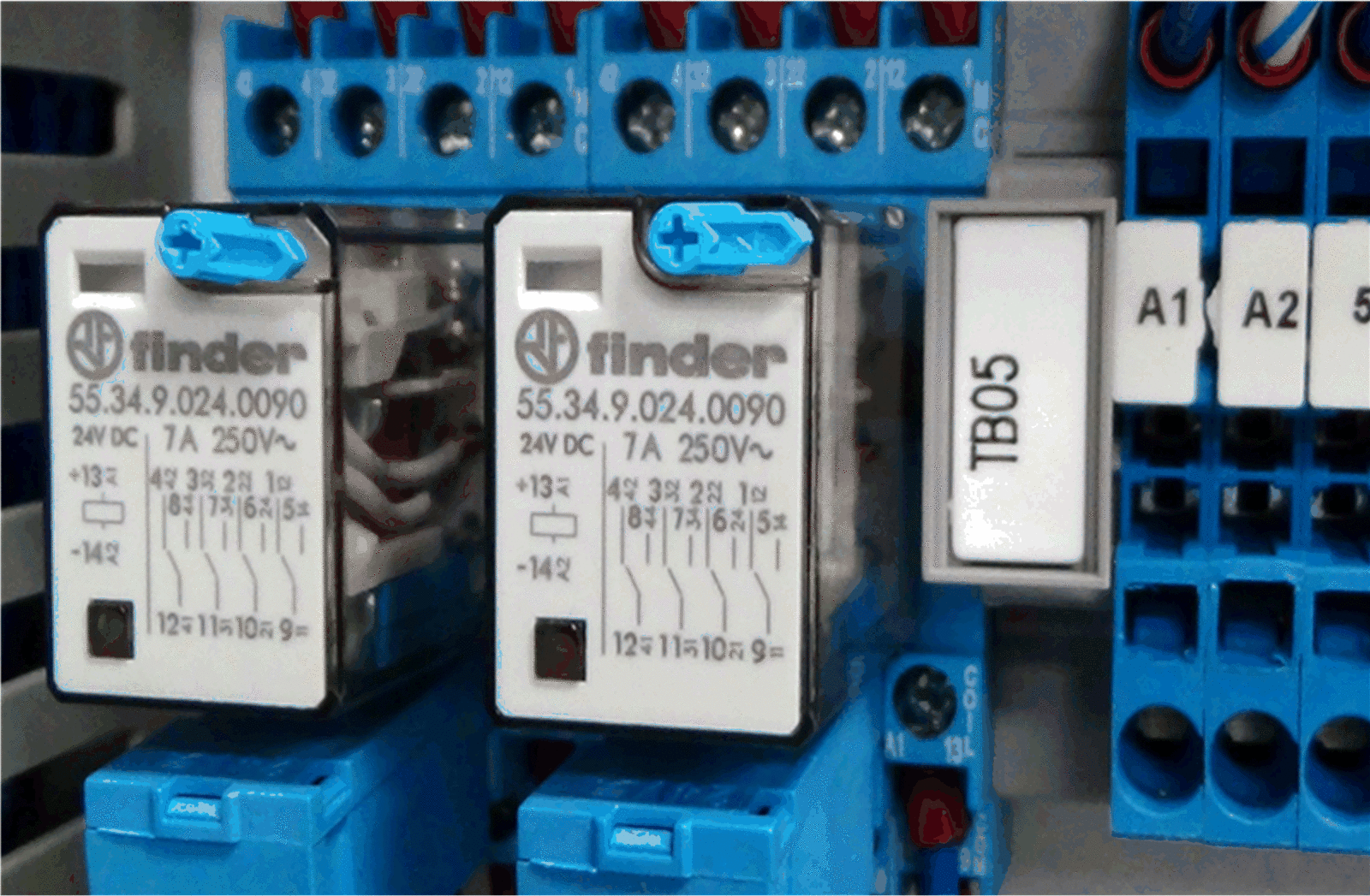Relays are electrically operated switches. A low-voltage, low-current control signal is used to operate a set of contacts that quickly and safely switch larger voltages and currents. Traditionally, the control signal energizes an electromagnet to open or close the contacts. Solid-state relays using semiconductor technology for the control and switching functions are also available.


Relay Electrical Contact Forms
 |
 |
 |
 |
| SPST
Single-Pole Single-Throw NO: Normally open (“make”) NC: Normally closed (“break“) Two terminals which can be connected or disconnected. |
SPDT
Single-Pole Double-Throw CO: Change-Over (“break before make“) A common terminal connects to either of two others, never connecting to both simultaneously. |
DPST
Double-Pole Single-Throw Equivalent to a pair of SPST switches or relays actuated by a single coil. |
DPDT
Double-Pole Double-Throw Equivalent to two SPDT switches or relays actuated by a single coil. |
Common Relay Types
There are five common types of relays widely used in different applications.
Contactor
- A special case of relay designed to switch high-current loads such as electric motors safely.
- Fast operating speed minimizes arcing caused by the load.

Solid-State Relay
- Similar to an electromechanical relay but has no moving parts and instead uses optical or electronic means to switch the load.
- Care is needed when used with AC.

Latching Relay
- Maintains either contact position indefinitely without power applied to the coil.
- It consumes power only for an instant while the relay is being switched.

Automotive Relay
- Robust relays working with 12V or 24V.
- The starter relay controls the high current of the cranking motor by small wiring and contacts in the ignition key.

AC Relay
Three basic types:
- DC relay with rectifier
- Phase relay with two coils on separate cores
- Split-pole relay uses a short-cut coil. The induced short-cut current is out-of-phase to the control current.

Please visit the following article for detailed insight into how different relays operate.
Electromechanical Relays: Types and Operating Mechanism

